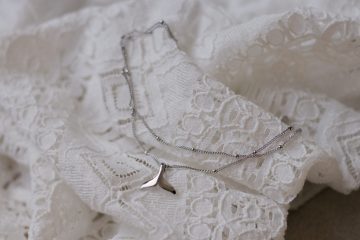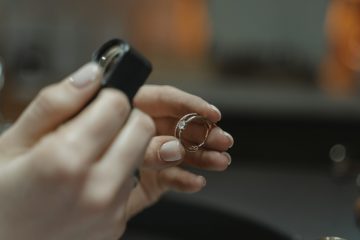In this article, I will try to explain the differences between, genuine gemstones, natural gemstones, and artificial gemstones.
Gemstones have allured people since ancient times. Their beauty and mystique have always been valued and been ascribed to different properties. The gemstone was previously only of natural origin. Today, there is a possibility to artIficially grow gemstones in laboratories. These stones often look more perfect than natural gemstones, without cracks or impurities.
We all have seen thousands of different kinds of jewelry on the web made from different types of precious stones. Many times there is confusion among customers who cannot easily distinguish between all those gemstones.
In the world of jewelry, you can find all kinds of gemstones, some more perfect than others. How can you know what is natural and synthetic, what their different values are, and does it really matter if it is not the real deal?
But what about their value?
Well, natural stones in good condition generally have a higher value than artificial gemstones. However, today’s artificial stones are not only sold as fake copies of their natural counterparts. Instead, there is also a big market for artificially produced stones. Some people prefer these stones which have a very perfect appearance and there are sellers specializing in synthetically grown gems. So it is actually a matter of taste.
So, let’s start to describe what kind of stones we usually use for jewelry.
NATURAL GEMSTONE
A natural gemstone is a mineral that can be cut and polished for use as jewelry or other ornaments. Natural stones are formed in nature without human intervention except for mining or cutting. Any addition to the precious stone of chemical colors removes the title of the precious stone. Therefore natural gemstones must retain their natural color.
GENUINE GEMSTONES
Genuine gemstones are those stones varieties found or mined in natural settings. When we talk about genuine gemstone actually we mean natural gemstone or precious stones that are processed to eliminate cracks or inclusions. So we’re actually talking about exactly the same thing, with the only difference being that genuine stones are being further processed.
It is really up to you what you prefer. But make sure that your gemstone comes with a certificate if it comes at a high cost. This is the best way to ensure its value, natural or artificial, Would you ever want to sell it or lose it.
LAB-CREATED GEMSTONES
As you probably guessed, these are made in laboratories. On the market, you will find them under various names such as created, synthetic, artificial, or laboratory. There are about 300 types of minerals that have been used as gemstones. Sapphire, emerald, ruby, and opal are some of the more expensive stones. Many of these types are very hard to find. But what happens when we want some of these stones but we can’t afford them? The easiest solution is to resort to stones created by laboratories. The difference between a natural gemstone and a lab-created stone is that it is completely different physically, chemically, and optically. In most cases -but not always- they are distinguished by their very intense color. However, for most of us, it is very difficult to see the difference. Only a trained eye could understand the difference between genuine gemstones and laboratory gemstones. Let me tell you one small tip, for those who haven’t got a trained eye. A number of necklaces with precious stones never have the same shape. These types of natural stones always have a small difference in shape, and this is what makes them unique.
But here’s the question I’m sure many of you are wondering. Why someone should buy a lab stone instead of a natural? As I mentioned before, the high cost is one of the reasons. The other reason is from an environmental point of view. The stones created by laboratories do not burden the environment since no mines are being dug.
SIMULATED GEMSTONES
I am sure you have seen many gems on accessories or jewelry made of plastic or glass. The purpose of the simulator is to “look” like a real stone, but that doesn’t mean that the seller is trying to deceive the customer. The most common reason you will see a fake stone accompanying an accessory is that they want to keep the price low. A hair accessory decorated with glass stones simulating diamonds clearly costs less than a hair accessory with real diamonds.
What is the best gemstone for you?
If you are wondering what is the best gemstone for you, then the answer is very simple. The most appropriate stone for you is the one that suits your needs.
It depends on many factors what is the right stone for you.
Do you plan to start making jewelry? Or you may have already experience in making jewelry.
Also, it depends if you want something natural or something brightly colored?
If you want to get involved in stone jewelry but you don’t have the skills you need, then the best advice I could give you is to work on LAB-CREATED gemstones. Any mistakes in cutting or finishing will not cost you dearly. But for someone who has experience in manufacturing and maintenance, could deal with the natural and the genuine.
As we said above, natural stones have imperfections. Small cracks etc. If you do not want cracks but the perfect finish and fancy colors then simulated stones are for you.
Allow me to give you a bit of personal advice here. Lab-created gemstone jewelry is also great for traveling. You better leave your very expensive jewelry at home. It is much safer there. Personally, I would never carry expensive natural or genuine stone jewelry with me, either on my vacation or on a business trip.
Please let me know if you have any questions or comments, and share the article with your friends.
I wish you a nice and creative day 🙂
Don’t forget to follow us on Instagram, Facebook, and Pinterest



